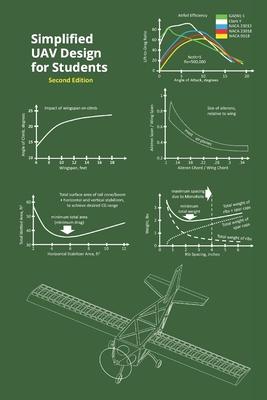
- How are the optimal aspect ratio and wingspan determined?
- What is a realistic weight goal for an aircraft of this size and engine power?
- How is the best airfoil selected?
- What is the ideal length for the tail cone / tail boom(s)?
- How are the sizes of the tail fins and control surfaces calculated?
- Fewer ribs require a thicker spar, so... What rib spacing will lead to the minimal total structural weight of the wings?
- How can a wing spar be designed that has the required strength and stiffness as well as minimal weight, while also allowing the wing to be easily disassembled into multiple sections for transportability?
- What electronic components are typically found in an RC airplane? How do they work? How can their required capabilities for my airplane (e.g. power and torque) be calculated? I have mentored multiple groups of students. This book collects my answers to these questions, mostly consisting of step-by-step analyses that use methods and best-practices from the aeronautical industry, from engineering textbooks, and from the expertise of RC airplane builders and ultralight designers. This book is also a great resource for any hobbyist who wants to design and build an RC airplane while doing at least a little bit of engineering beyond "That looks about right" or "I'll just copy the way it's done in similar airplanes". The simplified analyses in this book can be done by anyone with an understanding of high-school physics and will allow for an airplane that has minimal weight and minimal drag while being able to perform a desired mission (i.e. carrying a desired payload at a desired speed, and being able to take off and land on a desired runway length and to climb out at a desired angle). The same principles apply to designing an airplane that can carry one or more humans... but, for that, I recommend Daniel Raymer's Simplified Airplane Design for Homebuilders, a terrific book that was my main inspiration for writing Simplified UAV Design for Students. (In other words: Please do not trust your life to a vehicle that was designed using the simplified equations in my book!)
- How are the optimal aspect ratio and wingspan determined?
- What is a realistic weight goal for an aircraft of this size and engine power?
- How is the best airfoil selected?
- What is the ideal length for the tail cone / tail boom(s)?
- How are the sizes of the tail fins and control surfaces calculated?
- Fewer ribs require a thicker spar, so... What rib spacing will lead to the minimal total structural weight of the wings?
- How can a wing spar be designed that has the required strength and stiffness as well as minimal weight, while also allowing the wing to be easily disassembled into multiple sections for transportability?
- What electronic components are typically found in an RC airplane? How do they work? How can their required capabilities for my airplane (e.g. power and torque) be calculated? I have mentored multiple groups of students. This book collects my answers to these questions, mostly consisting of step-by-step analyses that use methods and best-practices from the aeronautical industry, from engineering textbooks, and from the expertise of RC airplane builders and ultralight designers. This book is also a great resource for any hobbyist who wants to design and build an RC airplane while doing at least a little bit of engineering beyond "That looks about right" or "I'll just copy the way it's done in similar airplanes". The simplified analyses in this book can be done by anyone with an understanding of high-school physics and will allow for an airplane that has minimal weight and minimal drag while being able to perform a desired mission (i.e. carrying a desired payload at a desired speed, and being able to take off and land on a desired runway length and to climb out at a desired angle). The same principles apply to designing an airplane that can carry one or more humans... but, for that, I recommend Daniel Raymer's Simplified Airplane Design for Homebuilders, a terrific book that was my main inspiration for writing Simplified UAV Design for Students. (In other words: Please do not trust your life to a vehicle that was designed using the simplified equations in my book!)
Paperback
$35.00